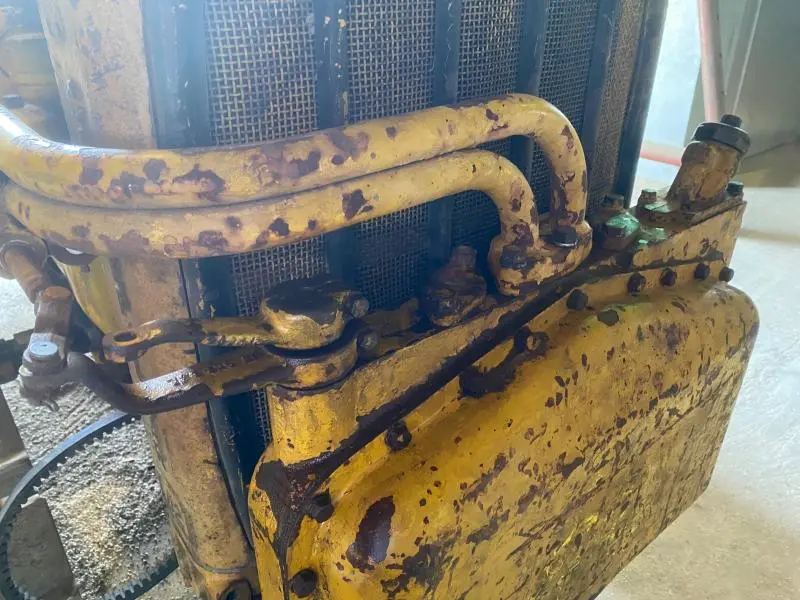
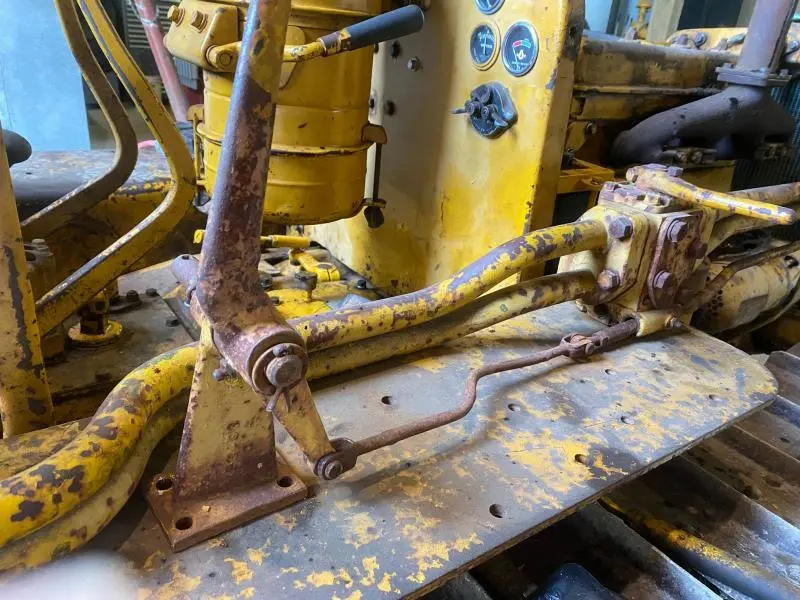
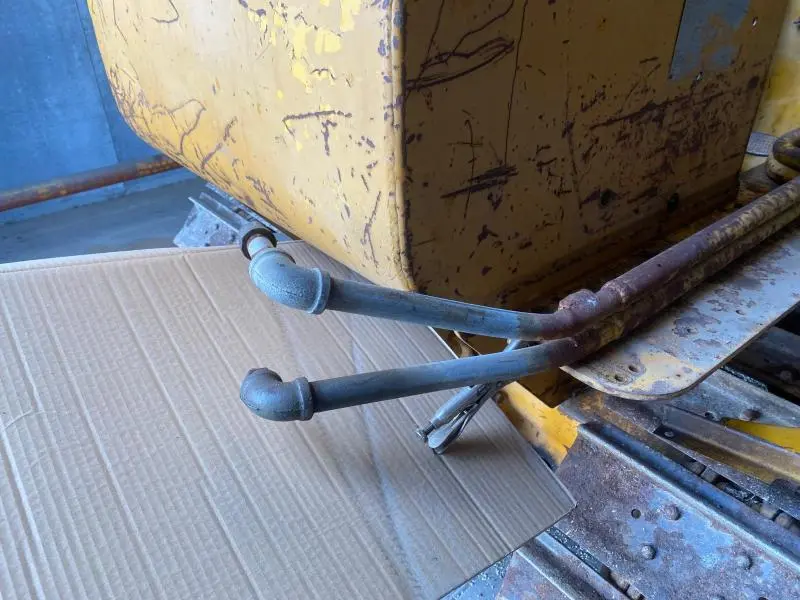
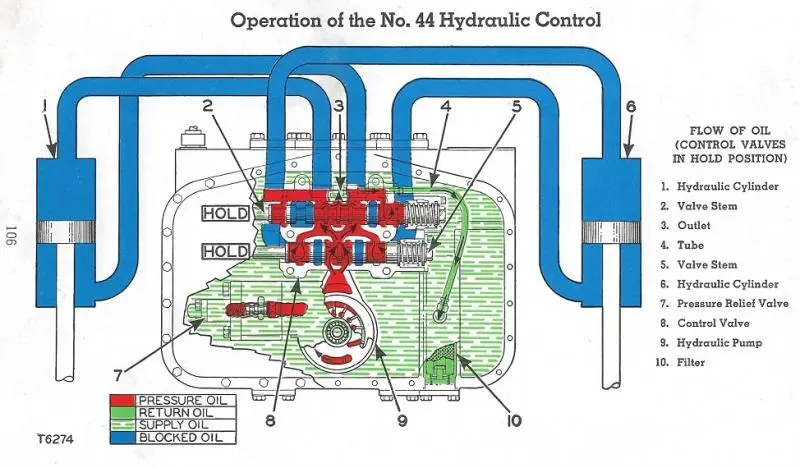
Unless you can find a set of lines for your second valve or want to bend and weld up a set, you may want to use hoses instead. You should be able to find the ends you need as well as the half circle two bolt retainers necessary to attach them to the top of the #44 unit. Do note that the CAT hydraulic controls of that era operate at about 1000 psi vs 2000-3000 for more modern ag and construction equipment. So, it takes a larger diameter cylinder to lift the same load when operating at the lower pressure.
Even at the lower pressure, at the rear of the tractor, I would do away with the cast water pipe elbows and either connect female quick couplers directly to the ends of the straight pipes or use forged high pressure elbows if you want to bring the connectors to the center of the tractor.
There are several styles of breakaway quick couplers available and I don’t think I’ve ever seen anything showing what CAT installed, so in my opinion it’s up to you what you use to connect the implement hoses. I saw the “Pioneer” type quick couplers for JD style connectors in my local tractor supply store the other day. If you have other implements with those ends you may want to use those or if not, use the ISO couplers that are standard for all new ag machinery. There’s more options/styles of the female breakaway quick couplers that accept the ISO standard male hose ends.
The most common style of breakaway coupler will require a section of hose between the coupler and a hard line since the coupler body must move back in its supporting/mounting collar to release the male/hose connector and be pushed forward to couple it up. Probably doesn’t require much over an inch total, but without that movement you have a quick coupler without the breakaway feature! There are other more modern coupler designs that can be connected directly to a hard line and still allow the hoses to pull out for emergency breakaway.
Properly functioning breakaway couplers will save you a lot of grief if you ever have an implement come unhitched or tongue breaks etc, but worn out leaking ones will make you want to take your chances and connect the hoses with unions!
Thanks for the replies!
I agree that using hoses would be the most efficient way to setup the second valve, but I want maintain as much of the originality as possible. I plan on bending steel tubing and welding the tubing to the flanges (that I will have to make also) at the pump. After getting an idea of how the original tubing connects to the hydraulic quick connects at the rear of the tractor then I will fabricate those parts also. It would seem logical that the piping for the second valve will run inside (closer to the tractor) of the existing pipes and will confirm that when I see some pictures.
On my late 5U I have Cat hard lines on one valve to the rear and Hyd hose for the second valve to the rear with shop made bracket . I can get pics tonight
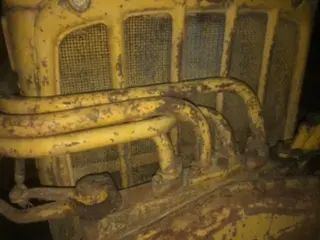
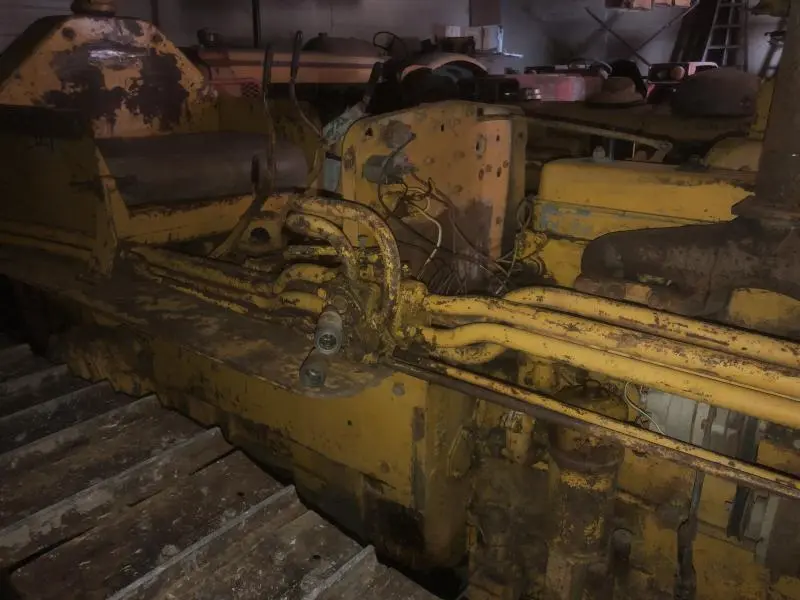
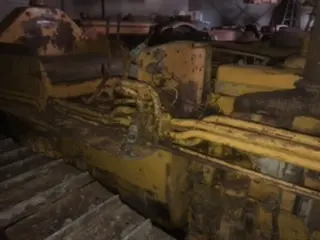
Here are some from Don’s Dinosaur D4 we call it. Don’t think it’s the same as a D2 for the plumbing.